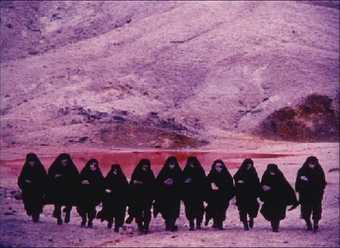āā¦the most noteworthy thing about modern times, by which I mean the years during which I grew up, is the absence of the father.ā
Shūji Terayama, 1975
Ā Apocryphal stories about Terayama as a sinister Svengali manipulating a group of loyal collaborators sit ambivalently with a creative life spent debunking patriarchal authority and reworking the Oedipal mother-son relationships that he saw as rampant in Japan. Transgressive images of motherly love interconnect many of the films in this series, in which enigmatic females hold sway with baleful powers. In an interview for Cinema Papers in 1975 Terayama claimed, āIt is the mother who has taken the manās place, who has combined the role of father with that of mother.ā In Pastoral Hide and Seek, he dramatises a boys desire to escape the overbearing presence of his mother with fantasies of romantic elopement and murder in rural Aomori. This unflattering portrayal of motherhood in one of Terayamaās most ambitious works is combined with Toshio Matsumotoās Hahatachi, a frank and unsentimental film for which Terayama contributed the script. A mosaic of lyrical scenes bearing witness to the lives of four mothers, Hahatachi is a moving testament to the increasingly matriarchal family life experienced by Terayamaās post-war generation.
Pastoral Hide and Seek (Denāennishisu)
Shūji Terayama, 1974, 35mm, 104 min
Mothers (Hahatachi)
Matsumoto Toshio, 1967 Japan, 16mm, 40 min
Curated by Thomas Dylan Eaton in association with É«æŲ“«Ć½.
With generous support from Daiwa Anglo-Japanese Foundation, Japan Foundation, Sasakawa Foundation, Toshiba Foundation, and All Nippon Airways.
Tate Film is supported by Maja Hoffmann / LUMA Foundation.

